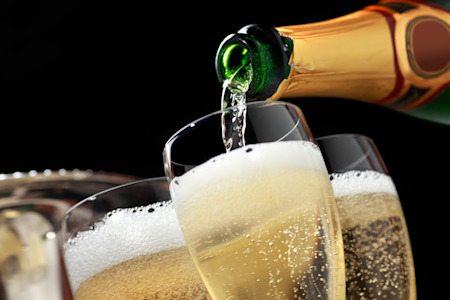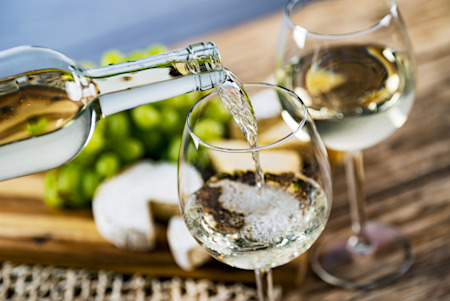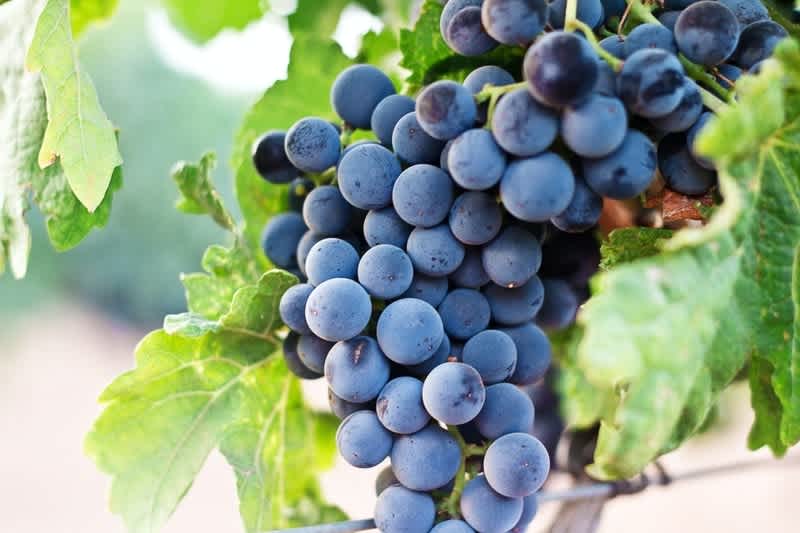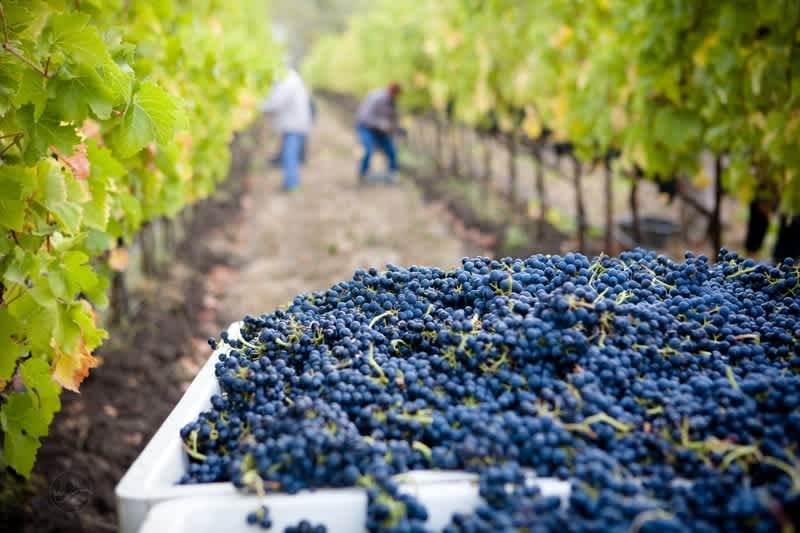How Much Sugar is in Wine?
Sugar is one of the single most essential components in winemaking, but how do you know how much sugar is in your wine?
Sugar is one of the single most essential components in winemaking, but the journey from a grape to a glass of wine isn’t always straightforward—especially if you want to know just how much sugar is in your glass.
IN THIS ARTICLE:
Want personalized wines?
Get your first box of wines for $44.95 + free shipping.

Is There a Lot of Sugar in Wine?
Some wines are entirely dry, meaning the only sugars come from the alcohol (which the human body does not absorb as well as regular sugar), and some wines are sticky-sweet with a higher sugar content than many soft drinks.
How do we end up with such different amounts of sugar per bottle, and how do you know what to expect? Well, it all comes down to the winemaking process and style. And while most winemakers aren’t legally obligated to tell you just how much sugar is in your bottle of wine, this article will help you determine what to expect so that you can pick the exact wines you want without worrying.
Tasting Sweetness - Dry vs. Sweet Wines
Sweetness is a major part of tasting wine. It’s one of our primary taste buds and is a crucial component of any wine. But it’s not always easy to determine the sweetness levels in a wine, and even experienced wine drinkers can easily confuse bold fruit flavors for sweetness. Just because a wine smells sweet does not mean it tastes sweet. Our brains like to take shortcuts, and since we know fruit is sweet, we assume the wine is sweet.
Sweetness plays off of acidity and tannin in a finished wine. These components mask one another and lead to “balance.” Some of our favorite wines are high in sweetness and acidity! But it’s hard to realize just how sweet or acidic they are when they are well balanced.
The terminology that the wine industry uses to describe the perception of sweetness is a little sideways. When a wine is not sweet, we call it “dry.” But what does dry mean?
All wine starts off as unfermented sweet grape juice. The fermentation process transforms the natural sugars in the juice into alcohol—this is the simplest definition of how we get from juice to wine! A wine that has been fermented dry means that most (if not all) of the sugar has been converted into alcohol, and that there is very little residual sugar in the finished wine.
The residual sugar that remains is measured in grams per liter and written as x g/L. But even finding this number is often a big challenge. Most winemakers do not have to disclose how much residual sugar is in the bottle. So, how do we find out which wines have the most or least sugar?
What Wine Has the Most Sugar? What Wine Has the Least Sugar?
There are a few generally agreed-upon figures worth remembering:
Dry wines range from 0-9 g/L of residual sugar. This is the biggest category in wine and bears a little more exploration than the other categories. Most wine (red and white) falls into this category. We think it’s safest to stick with varietal wines if you are especially sugar-conscious, as grocery store red blends are often the main perpetrators of making wines with high residual sugar. Anyone trying to sell you “low-sugar” wine without disclosing exactly how much is worth a skeptical look. Low sugar wine is defined as less than 1 gram of natural sugar per 5 oz serving in the U.S.
Off-Dry wines range from 10-18 g/L of residual sugar. (Lambrusco, some rose, and some sticky sweet red grocery store brands fall in this range.)
Medium Sweet wines range from 18-45 g/L of residual sugar. (Pink Moscato is often the only culprit that falls in the medium sweet range)
Sweet wines are anything more than 45 g/L of residual sugar. (Late harvest Riesling, Sauternes, and Ice Wine are a few of the sweet wines you can find.)
If you are looking to avoid sweetness, read on.

Firstleaf Tip
If you are looking to avoid sugar in your wine, reach for a glass of extra brut Champagne!
Sugar in Different Types of Wine
One of the most beautiful things about wine is that there is a style for every wine lover, and no two palates are the same. So whether you like your wine sweet or bone dry, we have a guide to help you find what you are looking for.
Sparkling Wine
If you are trying to minimize calories per glass or stay under a certain daily allowance of sugar, many sparkling wines will be your friend. Champagne, in particular, is one of the few winemaking regions on earth that will tell you exactly how much sugar is in your wine.
Over recent years, the trend in the region has been to make drier and drier wines. You may know the term Brut. In Champagne, this means that the wine is dry and can have 0-12 g/L of residual sugar. Other regions do not regulate the term as highly, so be careful of wines labeled Brut that aren't from Champagne. If you want to take it to the next level, you can search for Extra Brut (0-6 g/L) or Brut Nature (0-3 g/L).
If you are looking for low-calorie wines, we recommend you go with Champagne, where these terms are strictly regulated. Many sparkling wines from the rest of the world will have higher sugar contents than Champagne.

Firstleaf Tip
Remember that many grocery store brands have added sugar. An easy way to find dry wines is to drink better wine!
White Wine
Dry whites are not as impossible to find as they might seem. Remember that fruity wine flavor does not necessarily mean a higher sugar content.
Search for wines from cold climates if you are looking for low-sugar white wines with low-calorie contents. Wines from these regions often have higher acidity and struggle to ripen (meaning less sugar in the grapes). The warmer and sunnier the growing location, the more sugars end up in the grapes.
Varietal wines like Chardonnay, Muscadet, Sauvignon Blanc, and Pinot Gris will be good choices if you focus on wines from cooler areas.
Red Wine
Well-made red wines are almost universally dry. Some grocery store brands are notorious for having added sugar, but if you stick with slightly nicer wines (see the Firstleaf store), you are less likely to find high levels of residual sugar.
We recommend seeking out varietal wines like Cabernet Sauvignon, Pinot Noir, Tempranillo, and Syrah over big red blends.
Dessert Wine
Sweet wines are for sugar lovers. They are honeyed, crisp, and delicious. The interplay between acidity and sugar can be transcendent. These wines have high levels of sugar, but it's important to remember that these are only slightly sweeter than cola.
Sugar In Grape Growing
Many wine drinkers are curious about where the sugar in their wine comes from. Some might even be interested to learn that natural sugar is a by-product of photosynthesis! The two types of simple sugars that are most present in unpicked grapes are glucose and fructose. These fermentable sugars are crucial building blocks for winemakers.
As grapes grow and spend time ripening in the sun, the acidity drops as the sugar levels rise. This is one natural factor in why some wines are sweeter than others.
Regions like California's Central Valley get lots and lots of sunlight. The high levels of sunlight mean more sugars in the grapes and grape juice.
In some parts of the world, grape growers make late harvest wines. This means they wait far past the normal harvest date to pick their grapes, ensuring less moisture and more sugar for their pressed juice.
No matter what style a winemaker seeks to produce, when the sugar levels and acidity are balanced, it's time to harvest.
How Much Sugar Is Left in Wine After Fermentation? Sugar In Winemaking
Without sugar, the winemaking process would be impossible. On the surface, winemaking is simple. The natural yeast ferments the sugar from the grape juice to produce alcohol and carbon dioxide. This is called the fermentation process, and the alcohol content in a wine is a direct result of the sugars fermenting into alcohol.
Throughout this process, winemakers can encourage fermentation or, if they desire, stop it early using temperature control. If they stop it early, this can lead to lower alcohol wines with a higher sugar level.
Some winemakers may even add a little sugar during fermentation to balance the acidity, raise the alcohol levels, or make a particularly sweet style. This technique is called chaptalization.
Late harvest wines have a unique winemaking process. As we mentioned in the previous section, grapes are left on the vine to encourage sugar production. Some of these wines are affected by botrytis cinerea (also called noble rot) which is encouraged by grape growers in Bordeaux, Hungary, Austria, and Germany. This noble rot sits on the grape skins and sucks out much of the water content inside the grape, leaving sweet, concentrated honey-like juice when the grapes are pressed. While noble rot sounds bad, it is integral in making some of the best (and most expensive) wines on the planet.
But this isn't the only way for winemakers to make sweet dessert wines. Some Italian wines are picked late and left to dry on straw mats. In colder climates, some winemakers wait well into the winter to harvest when the grapes are frozen, further concentrating the juice and removing some of the water content when it is pressed.
No matter what style a winemaker is attempting to make, it is crucial that they control the residual sugar levels (what sugar is left in the wine after fermentation).

Shop our Store With Confidence
Looking for low sugar wines? Shop the Firstleaf store to find award-winning wines that are low in sugar.
Shop NowIN THIS ARTICLE
Want personalized wines?
Get your first box of wines for $44.95 + free shipping.


WinePrint™ by Firstleaf
Are you looking to learn more about your wine preferences? Check out our Wine Print for an in-depth look at your personal tasting profile. Discover your favorite wines, varietals, regions, and tasting notes and get personalized recommendations wherever you are.
Learn More

